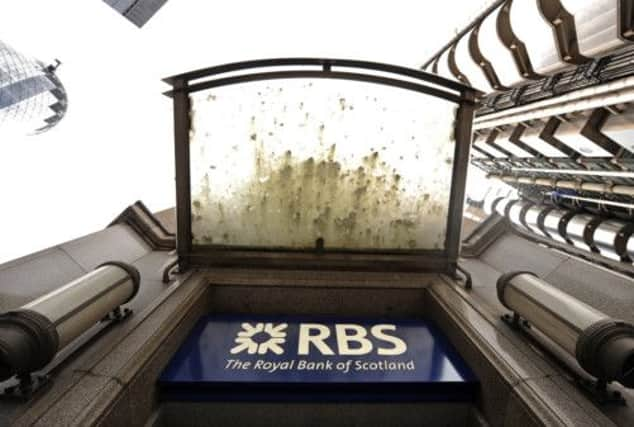Bill Jamieson: Banks: emerging from the bottom drawer


In the deep purgatory of this bottom drawer, stirrings are afoot. Last Friday, shares in Royal Bank of Scotland were top of the leader board with a 5.7 per cent climb to 336.8p. That’s 71 per cent up on the low of 196.6p last summer if still short of the 367.8p peak reached earlier this year.
The share jump might have been dismissed as a knee-jerk response to the announcement of 1,400 job losses in the retail bank division – around half of these to hit the bank’s Edinburgh headquarters.
Advertisement
Hide AdAdvertisement
Hide AdHowever, RBS was not alone. Shares in Lloyds Banking Group rose 3.2 per cent on Friday to 62.84p, a 12-month high. Investors who bought at last year’s low would have more than doubled their money.
The RBS rally was sparked by a change in stance by analysts at UBS, who have recommended that their clients switch out of defensive stocks into the banking sector. UBS analyst Sanford Bernstein has put a 450p target price on the stock.
The rationale for the switch portends problematic times for the rest of us, if “good” news for the banks. Bank interest margins worldwide, says UBS, have been depressed for years by ultra-low interest rates. But now, say the UBS strategists, “rising interest rate expectations would be a very strong driver for the sector, as rising rates would drive margins and (assuming the economy was recovering) be accompanied by improved volumes”.
On RBS specifically, UBS argues that “beneath the noise [of restructuring and state ownership] the bank offers investors exposure to a strong UK retail franchise and the largest and most positive UK corporate banking franchise”.
There are hefty political complexities to be overcome – not least the future landscape for regulatory oversight. Today sees the launch in Edinburgh of the latest UK government paper on the impact of Scottish independence on bank supervision. It will warn that the scale of the Scottish banking assets compared to GDP would be larger than Iceland’s when its banks were deemed “too big for the Iceland government to rescue”.
Scotland, it says, enjoys a “best of both worlds position” – maintaining a large financial sector headquartered in Scotland and also benefitting from being based within the UK regulatory system that manages financial stability risks.
But the Scottish Government is quick to disagree. The SNP’s counter paper, due out tomorrow, will set out its alternative view of Scotland’s financial strength and the opportunities which independence would bring to its principal economic sectors. However, if there is a separate regulatory system in Scotland, this would present significant operational problems for banks.
Long-standing investors who have clung on to their shareholdings may have cause to feel their patience is at last being rewarded, even if a return to the peaks of seven years ago is unlikely. New investors would do well to advance with caution.
Advertisement
Hide AdAdvertisement
Hide AdAnd what sort of investment proposition might shares in RBS and Lloyds offer once the road is clear for the sale of the government’s holdings? Much will depend on the return to dividend payments and clarification on dividend policy. For these banks, I suspect, will emerge as highly-regulated quasi-utilities, operating under tight accountability and supervision. That might suggest limited appeal to investors. But given the recent shrinkage of the utilities sector, many might welcome the prospect of a return to conservatively run banks offering an unexciting but dependable dividend stream.
Top award for Alliance
ONE of the reasons I have championed investment trusts over mutual funds is the greater information and disclosure in investment trust annual reports. They are a vital tool in helping investors to choose which trust best meets their needs and in keeping them informed of performance and changes in investment policy.
So I am delighted to report that two Scottish trusts headed the Association of Investment Companies best information to shareholders awards last week.
The judges once again chose Alliance Trust for its approach and style in the generalist trust category. They praised the clarity of strategy and use of colour and design, noting the “excellent” portfolio review.
Murray International Trust, part of the Aberdeen Asset Management stable, won commendation, also praised for its distinctive approach in this category.
The judges commended manager Bruce Stout’s “outstanding” manager’s report.
Alliance has much to do in further narrowing that 12.8 per cent discount to net assets, so a clearly presented annual report is a critical element in improving investor perceptions. I commend readers to the Alliance Trust Savings website, its research centre and to the clean, elegant and highly informative Alliance annual report in particular. Well done.